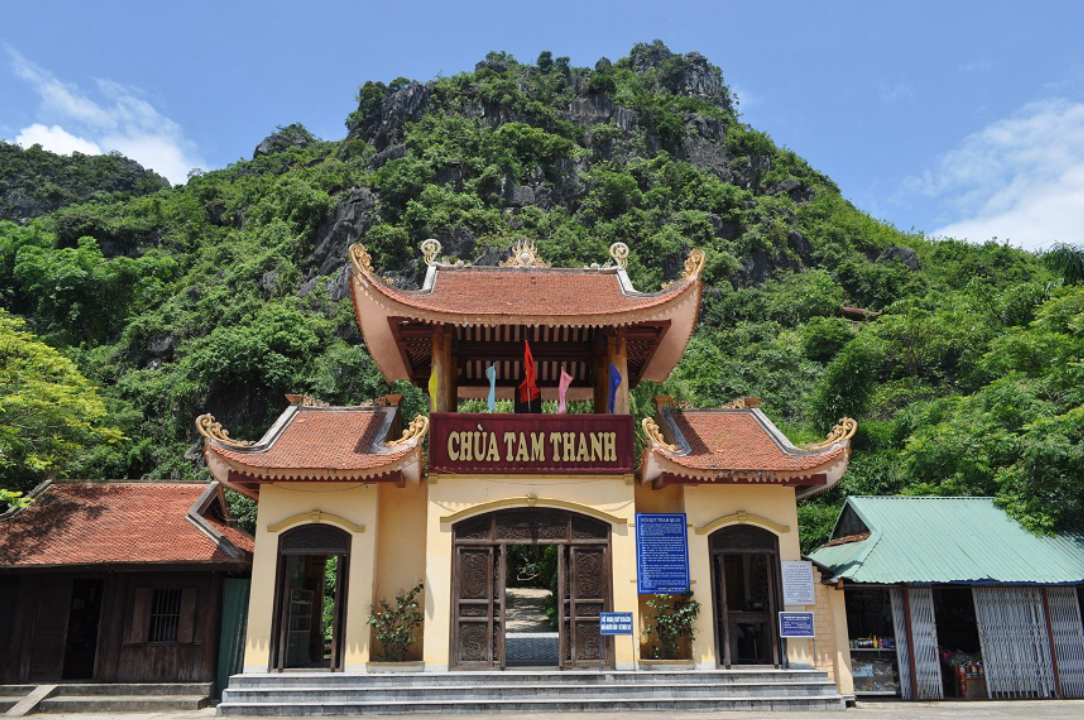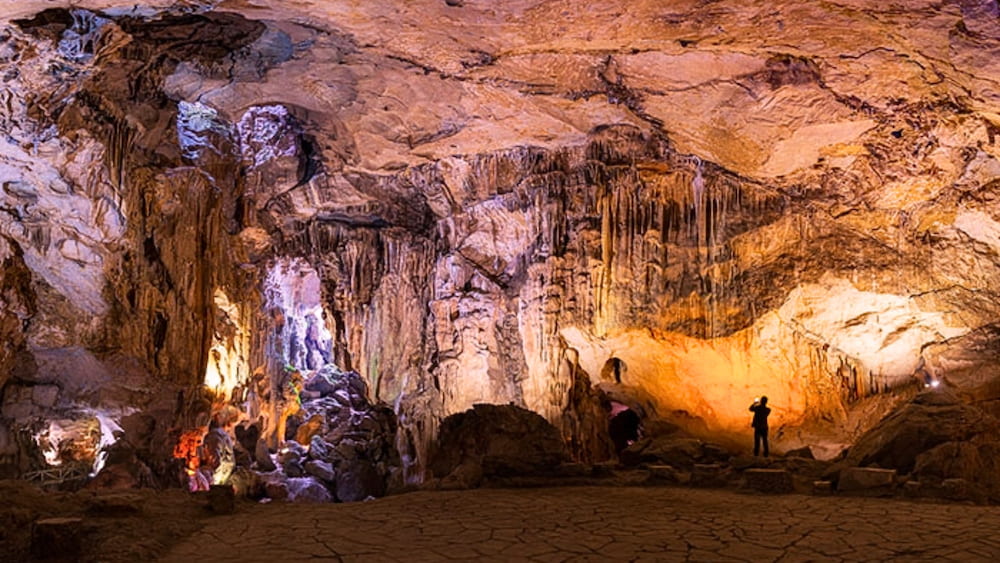Tam Thanh Pagoda
Tam Thanh Pagoda is one of the most iconic religious and cultural sites in Lạng Sơn Province, located in the scenic Tam Thanh Cave area. This ancient pagoda is famous not only for its spiritual significance but also for its unique setting within a limestone cave, surrounded by breathtaking natural beauty and local legends. It is a popular destination for both pilgrims and tourists seeking peace, history, and natural wonder.
1. History and Background
Tam Thanh Pagoda has a long-standing history, believed to have been built during the Lê Dynasty (15th–18th century). Over time, it has become a spiritual hub for generations of Buddhists in northern Vietnam.
The name “Tam Thanh” (Three Purities) refers to a Daoist concept, reflecting the temple’s early fusion of Buddhism, Taoism, and Vietnamese folk beliefs. Later, it became more distinctly Buddhist. Today, it is recognized as a National Historic and Cultural Relic, preserving both architectural and religious traditions.
The pagoda is part of the broader Tam Thanh – Nhị Thanh – Tô Thị Mountain complex, which includes caves, shrines, and legendary sites tied to Vietnamese heritage.
2. Architecture and Design
What makes Tam Thanh Pagoda truly unique is its location inside a natural cave on Tam Thanh Mountain. The integration of architecture and nature creates a mystical, sacred atmosphere.
Key architectural and natural highlights include:
-
Cave Entrance: Visitors ascend stone steps to enter the cave through a narrow opening that leads to the main worship area.
-
Main Shrine Inside the Cave: The cave opens into a spacious interior where the altar and statues are placed. The rock walls form a natural backdrop for Buddhist figures like Shakyamuni Buddha, Guanyin (Quan Âm), and others.
-
Stone Inscriptions and Ancient Carvings: These are etched into the cave walls, including a famous poem written by Ngo Thi Si, a well-known Vietnamese scholar from the 18th century.
-
Natural Skylight (Thiên Tinh): A hole in the cave ceiling lets sunlight stream in, adding an ethereal glow to the altar space.
-
Stalagmites and Stalactites: Naturally formed features are often seen as symbols of divine presence and spiritual energy.
The combination of sacred art and raw cave formations makes this one of the most distinctive pagodas in Vietnam.
3. Spiritual and Cultural Significance
Tam Thanh Pagoda is not only a place of worship but also a spiritual landmark in northern Vietnam. Its setting symbolizes the harmony between humankind and nature—a core value in Vietnamese and Buddhist thought.
The pagoda is a center for:
-
Prayer and offerings, especially during the Lunar New Year and Buddhist festivals like Vesak and Vu Lan
-
Pilgrimage activities, where visitors pray for peace, health, and fortune
-
Cultural education, as many schools organize field trips to learn about history, religion, and poetry
-
Local legends, including the nearby Tô Thị Mountain, which tells the tale of a woman turning into stone while waiting for her husband—a symbol of loyalty and endurance
4. Visiting Tips
-
Location: Tam Thanh Ward, Lạng Sơn City, Lạng Sơn Province
-
Opening Hours: 7:00 AM – 5:30 PM daily
-
Entrance Fee: Free (donations are appreciated)
-
Accessibility: The temple involves a short hike up stone steps; wear comfortable shoes
-
Dress Code: Modest attire is expected—no shorts or revealing clothes
-
Best Time to Visit: Spring (especially around Tet) or autumn, when the weather is cool and dry
5. How to Enjoy Your Visit
-
Start your journey by exploring the surrounding Tam Thanh Cave complex, which includes other caves and scenic viewpoints
-
Enter the pagoda cave quietly and respectfully
-
Offer incense and prayers at the main shrine
-
Take time to admire the natural skylight and carvings, especially the poem by Ngo Thi Si
-
Visit nearby sites such as Tô Thị Mountain and Nhị Thanh Cave to complete your cultural and spiritual experience
Conclusion
Tam Thanh Pagoda is a one-of-a-kind spiritual site where natural beauty, legend, and religious devotion come together. Its peaceful cave setting, historical depth, and cultural resonance make it a must-visit destination in Lạng Sơn. Whether you are a pilgrim or a traveler, the pagoda offers an unforgettable journey into Vietnam’s spiritual heart.



